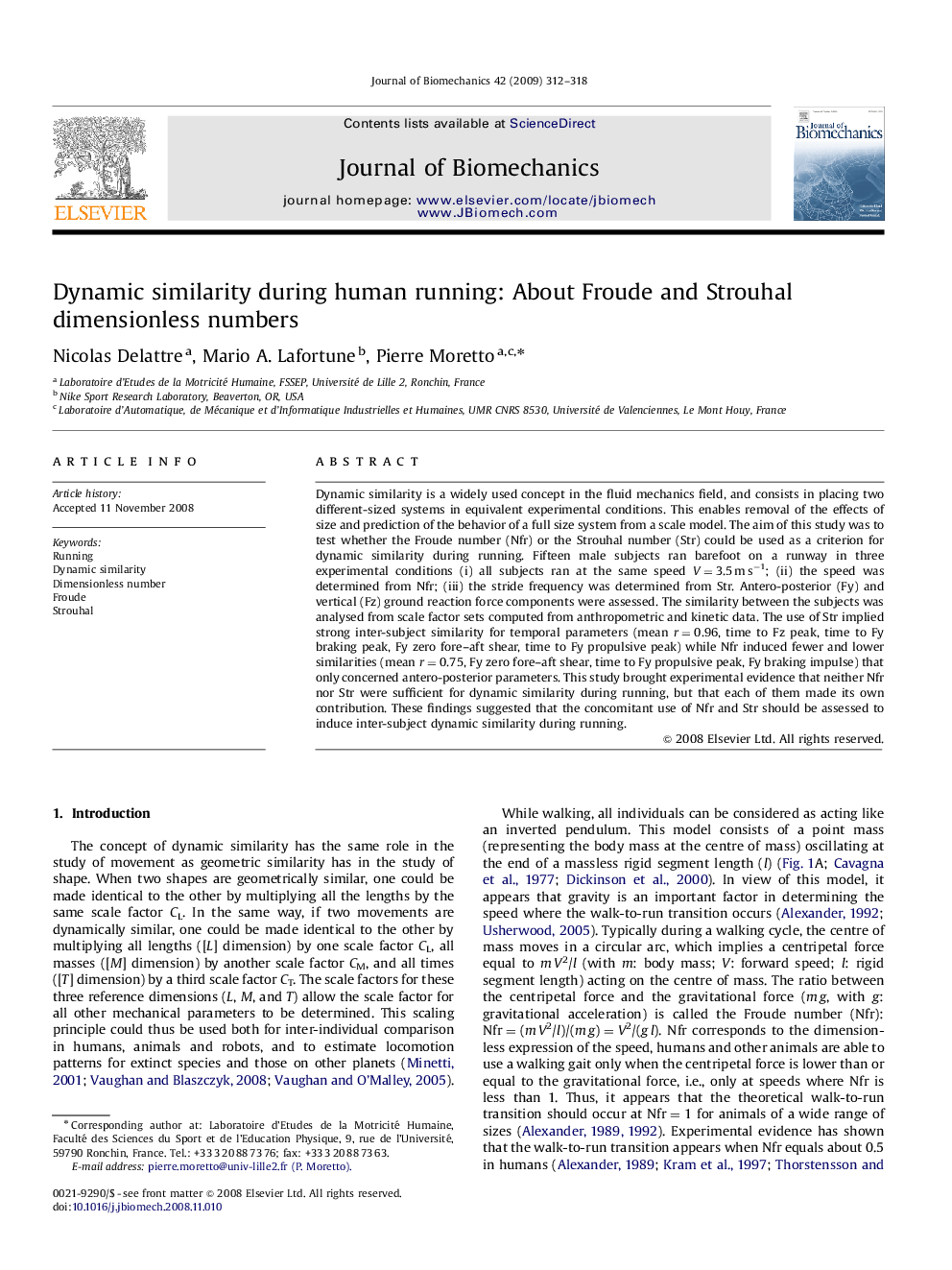| Article ID | Journal | Published Year | Pages | File Type |
|---|---|---|---|---|
| 874577 | Journal of Biomechanics | 2009 | 7 Pages |
Dynamic similarity is a widely used concept in the fluid mechanics field, and consists in placing two different-sized systems in equivalent experimental conditions. This enables removal of the effects of size and prediction of the behavior of a full size system from a scale model. The aim of this study was to test whether the Froude number (Nfr) or the Strouhal number (Str) could be used as a criterion for dynamic similarity during running. Fifteen male subjects ran barefoot on a runway in three experimental conditions (i) all subjects ran at the same speed V=3.5 m s−1; (ii) the speed was determined from Nfr; (iii) the stride frequency was determined from Str. Antero-posterior (Fy) and vertical (Fz) ground reaction force components were assessed. The similarity between the subjects was analysed from scale factor sets computed from anthropometric and kinetic data. The use of Str implied strong inter-subject similarity for temporal parameters (mean r=0.96, time to Fz peak, time to Fy braking peak, Fy zero fore–aft shear, time to Fy propulsive peak) while Nfr induced fewer and lower similarities (mean r=0.75, Fy zero fore–aft shear, time to Fy propulsive peak, Fy braking impulse) that only concerned antero-posterior parameters. This study brought experimental evidence that neither Nfr nor Str were sufficient for dynamic similarity during running, but that each of them made its own contribution. These findings suggested that the concomitant use of Nfr and Str should be assessed to induce inter-subject dynamic similarity during running.
